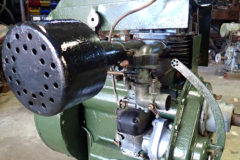Working with a 1928 Wallis & Steevens
Posted by Chris Graham on 22nd March 2022
Peter Love recounts some fond memories of a busy and very tiring day spent working with a 1928 Wallis & Steevens, back in 1980.

Heading out with the Bedford TK and Kathleen, the 1928 Wallis & Steevens 6 ton Advance, with Neal and Melanie Herridge, ready to roll a new road in Eastbourne. (Pic: Peter Love)
It was 20 March 2oth, 1980, and freezing cold as I set off from Telham, near Battle, in East Sussex at some unearthly hour, with Neal and Melanie Herridge for Bexhill, to pick up their 1969, dark brown Bedford TK, with 330 diesel engine artic unit and Tasker 10 ton low-loader.
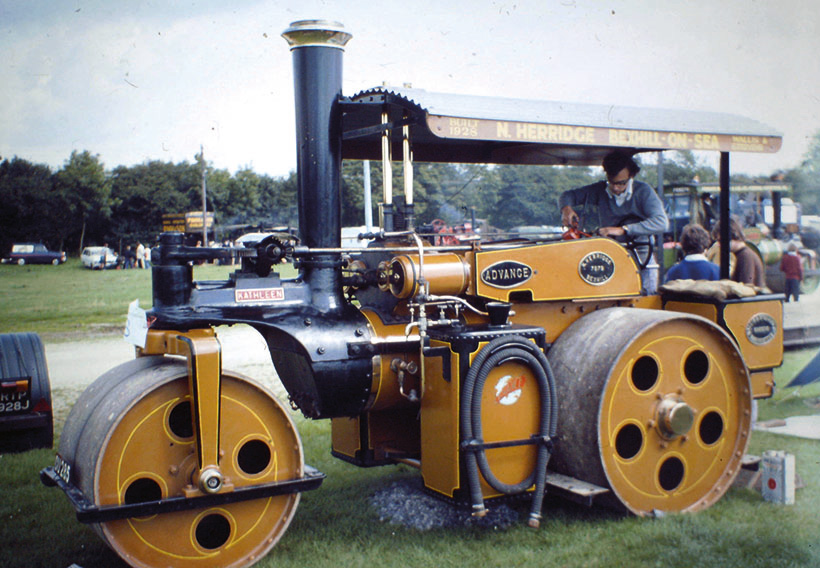
Seen at the SCHVPT Detling Rally staged by Jim Tredgold on 4th September, 1977 is No. 7979 Kathleen. (Pic: Bob Moorman)
On the back was 1928 Wallis & Steevens 6 ton Advance No.7979 steam roller, Kathleen. Neal put the engine in steam as we headed out towards Eastbourne to do a paid job, rolling in a new road complex that was being built in preparation for a small housing estate to be constructed.
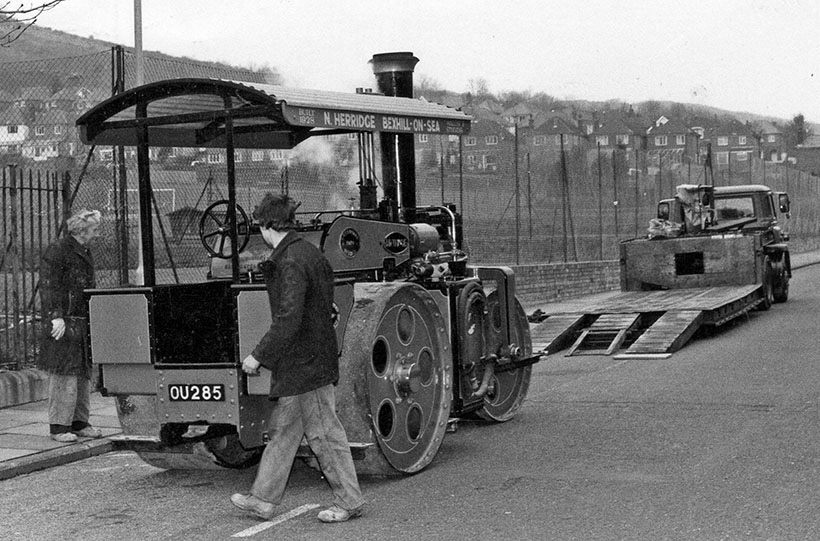
With his steel toe caps shining off the flash gun of the camera, Neal Herridge has the engine off the low-loader. (Pic: Peter Love)
After stopping a couple of times on the journey to stoke up the fire, we arrived safely at the site and in plenty of time. The road gang were very much up for the day ahead, but the weather was so cold that, at one point, it started to snow, but there was no frost about thank goodness!
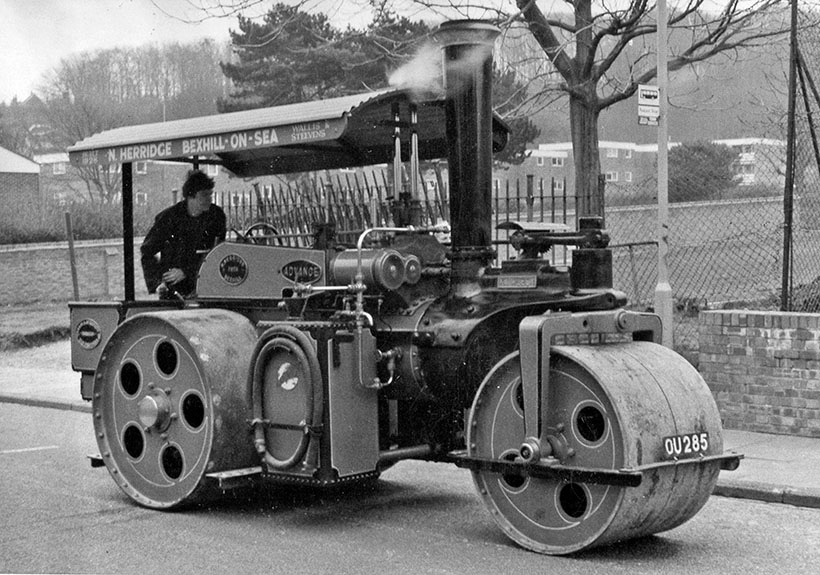
Kathleen heads to the new road around the corner from where the low-loader was parked. (Pic: Peter Love)
The air lines were disconnected and the trailer axle locking ‘U’ bolts were undone when the hydraulic jacks were placed at the end of the trailer frame and jacked up, followed by the three of us pulling the rear axle out. The trailer was let down and, with the ramps all in place and the loading chains removed from Kathleen, Neal removed the engine from the trailer. By now we were ready for the job to go ahead, but the asphalt hadn’t arrived so the three of us were invited into the workman’s hut for a cup of tea and a peep at the Daily Mirror or Sun newspapers that the gang were reading!
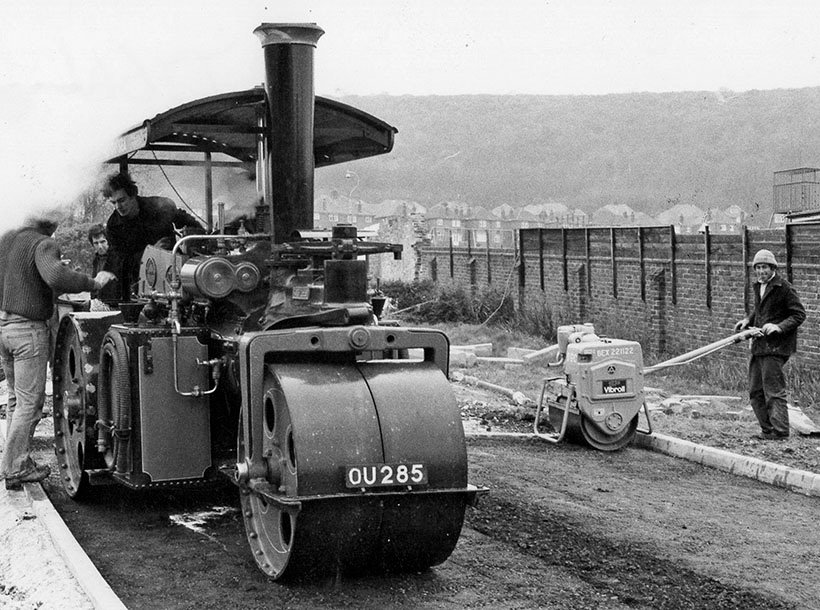
Instructions are given about what needs to be done during the rolling process. As can be seen, the asphalt depth is considerable. (Pic: Peter Love)
By now it was 10.30am and the first load had arrived; it was full action as the gang placed it down and instructed Neal and Melanie what they had to do to keep their rolling straight. Neal even had the camber set on Kathleen’s rear axle, which he had rebuilt in his engineering business. He had unsiezed and renewed the fork front pivot pin when he first acquired the roller, which was in quite a rough state at that time.
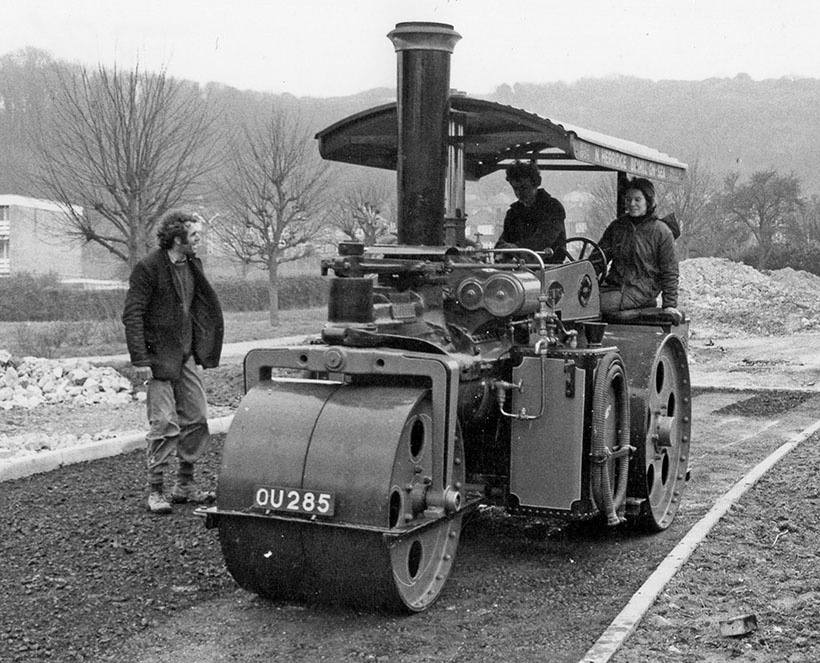
As always, steerswoman Melanie Herridge shows her skills at the wheel. (Pic: Peter Love)
He’d also replaced various stays, re-tubed the engine and converted it with a regulator lever instead of the normal Wallis wheel valve, which not many people like. We had plenty of coal on board in the rebuilt bunkers, which Neal had remade to create the correct shape. The injectors were their usual selves, dribbling water when on, but they worked well on this engine. He also had the knack of steaming this six-tonner, which again could be problematic compared to the 8/10 ton examples.
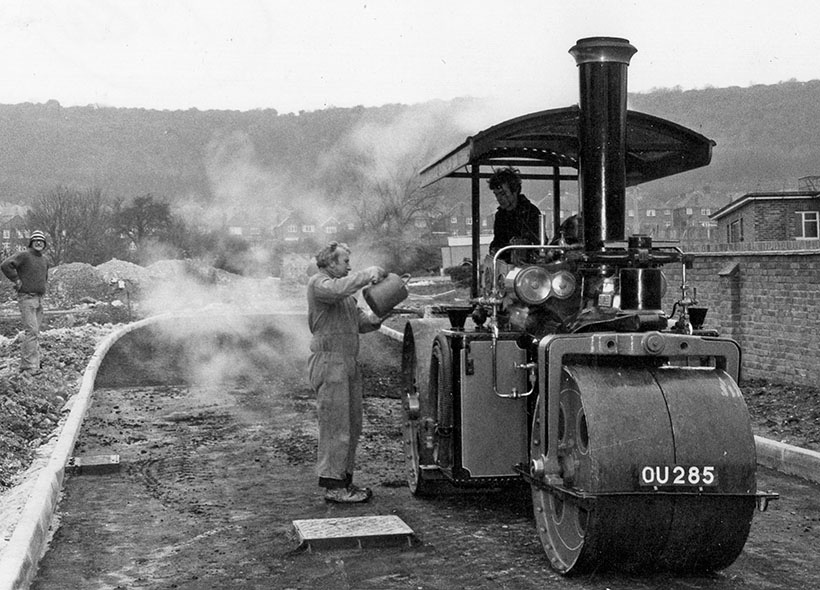
On goes the water to keep the asphalt from sticking to the metal rolls. (Pic: Peter Love)
After the first load, the second hadn’t arrived, so it was back to the gang’s hut for another cup of tea and a sandwich. The foreman was on the telephone to find out why the second load hadn’t arrived and he came back and said the plant had broken down, but they were up and running again. Just after 2pm the second batch arrived and the foreman was at it again with the watering can on the front and rear rolls, as the Advance had lost all its water sprayers years back, although it might never have been fitted with them in the first place.
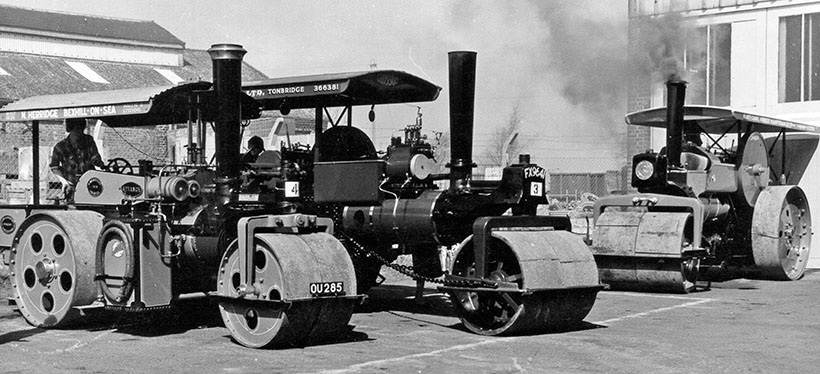
Three steam rollers I have been closest to in my life: Wallis & Steevens No. 7979, Aveling & Porter No. 10393 and, of course, Armstrong Whitworth No. 10R35, seen on April 16th, 1983. (Pic: Peter Love)
The engine had been new to W Turner Ardwick (Manchester) and various later owners. Today the engine has had major boiler work and moved on to various other owners, but is now painted back in its original Turner colours, but is still missing its boiler steel lagging sheets and lives in the same area as it did in 1980.

It’s reunion time as many memories come flooding back to Melanie (who is now married to Simon Fisher) on June 4th, 2017, at Hadlow Down, as she steers 1928 Wallis & Steevens 6 ton Advance No. 7979 Kathleen. The engine was sold by her former husband Neal Herridge, to make way for the genuine 1923 Aveling & Porter No. 10722 tractor/convertible Toady, which he went on to rebuild. (Pic: Bob Moorman)
We were all loaded up and on the road by 3.30pm and the fire was dampened down on Kathleen – named after Neal’s mother. We met lots of school children on their way home, and I was dropped off at Battle railway station at 6pm. I was feeling rather greasy on my trip home to Tonbridge on the warm and ultra-reliable Hastings–Charing Cross (1957-1986) 201 class diesel electric multiple unit sets, which were commonly called ‘Thumpers’, and were narrow to negotiate the troublesome Mountfield tunnel. I was welcomed home by Jayne who had cooked me a fine tea left in the oven. I could hardly keep my eyes open as I headed for bed at 10pm, but I would not have missed the occasion for anything, those were the days!
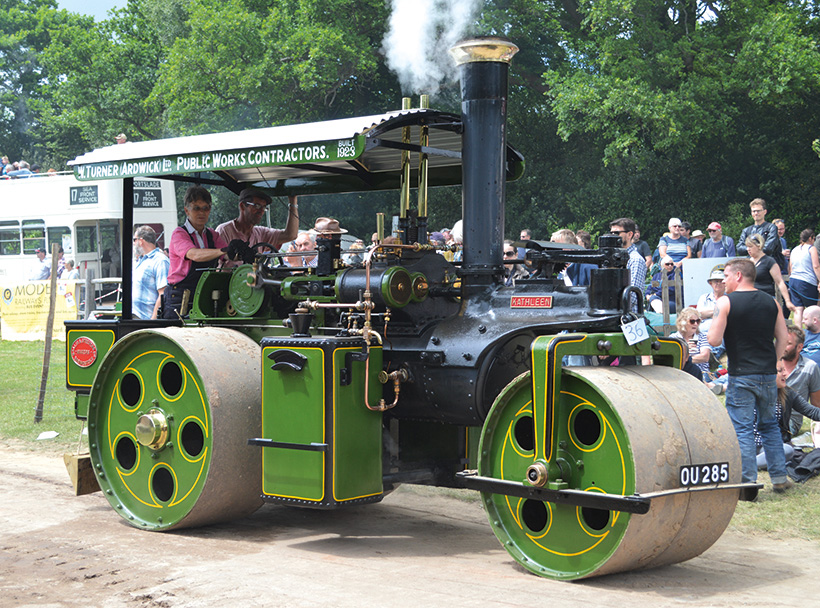
Looking lovely after a major rebuild, but with the boiler lagging still to be fitted, is 1928 Wallis & Steevens 6 ton Advance No. 7979 Kathleen all back to its original owner’s colours, with Melanie Fisher back at the steering wheel. This took place on June 4th, 2017. (Pic: Bob Moorman)
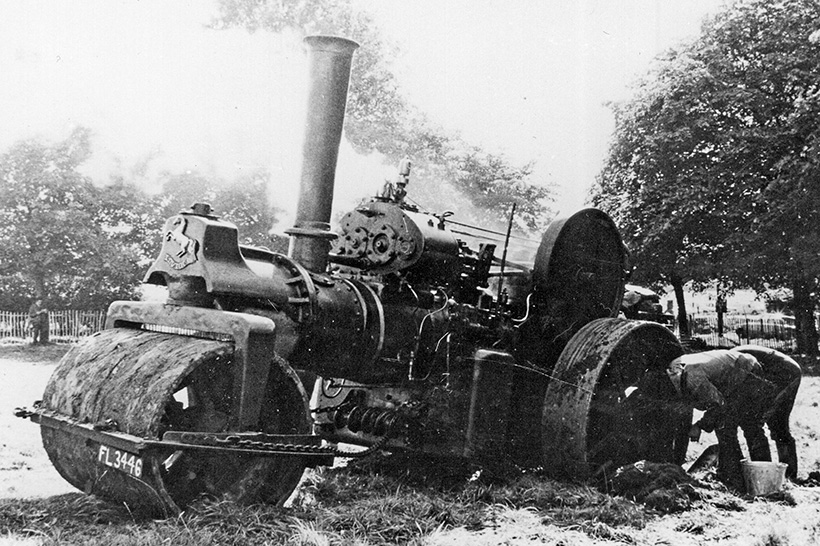
The editor first came across No. 10722 stuck in the mud at the Great Bookham Rally in 1968 – the engine is a genuine convertible. When Neal and Melanie collected the engine, it was in pieces at Sellindge, in Kent, with the boiler placed upright, held in the air via three telegraph poles. (Pic: Peter Love)
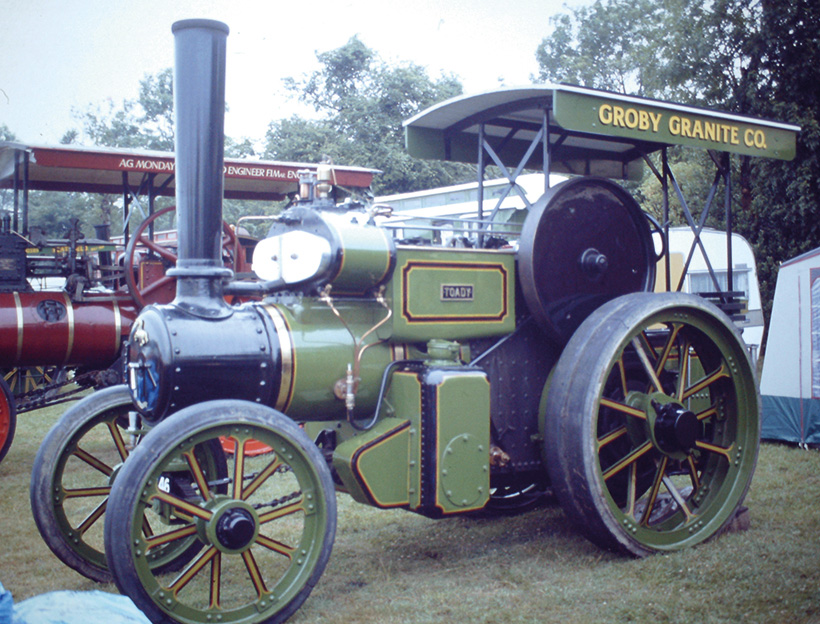
Completely rebuilt by Neal Herridge, including the fabrication of the front wheels and axle assembly, is No. 10722, showing how the engine would have been with its second working owner; seen on July 15th, 1993, at the Kent County Show. Today, Neal rebuilds Jaguar E-Types to concours standards. (Pic: Peter Love)
For a money-saving subscription to Old Glory magazine, simply click HERE



